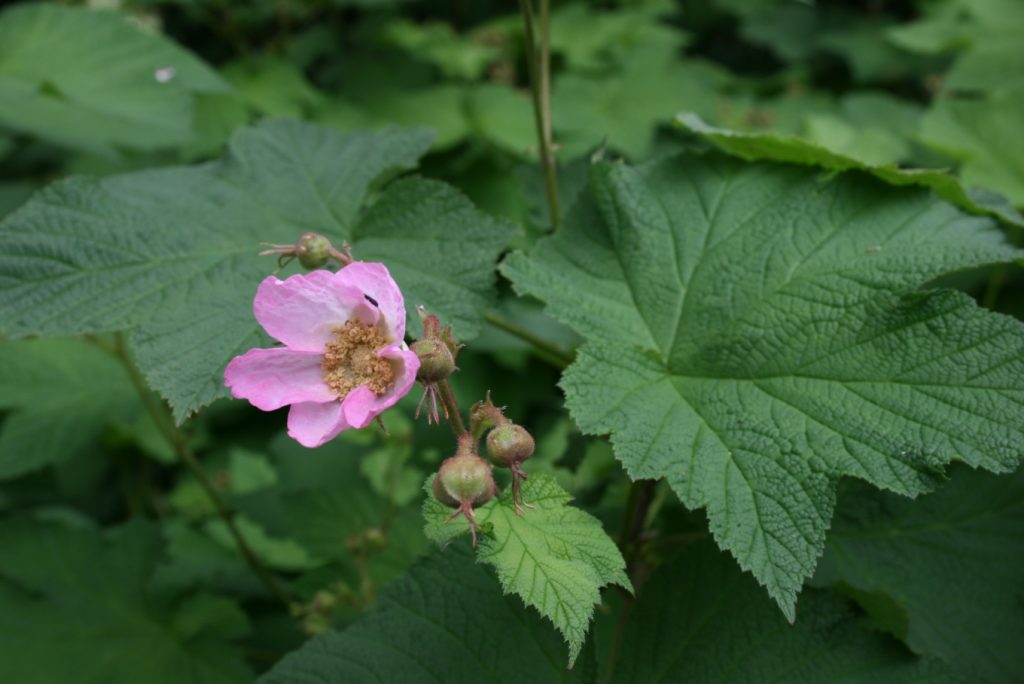 Rubus brasiliensis is a plant native to Brazil that is a member of the Rosaceae or rose family of plants. Commonly known members of this group of plants include blackberries, raspberries and loganberries. The fruits of these plants are aggregates of small druplets. Rubus brasiliensis is used in traditional medicine as a central nervous system tonic and may be useful in the treatment of anxiety or other mood disorders. In one study the anti-anxiety effects of Rubus brasiliensis leaves were investigated in rats and mice. Rats were administered various doses of Rubis brasiliensis leaf extract orally and then exposed to experimental stress. The extracts were effective at inhibiting the anxious behaviour of the rats but the effects were dependent on the type of solvent used to extract the plant extracts. The same researchers also administered Rubus brasiliensis extracts to mice and could block the anxiolytic effects with the drug flumazenil suggesting the effects were exerted through the benzodiazepine receptor in the animals.
Rubus brasiliensis is a plant native to Brazil that is a member of the Rosaceae or rose family of plants. Commonly known members of this group of plants include blackberries, raspberries and loganberries. The fruits of these plants are aggregates of small druplets. Rubus brasiliensis is used in traditional medicine as a central nervous system tonic and may be useful in the treatment of anxiety or other mood disorders. In one study the anti-anxiety effects of Rubus brasiliensis leaves were investigated in rats and mice. Rats were administered various doses of Rubis brasiliensis leaf extract orally and then exposed to experimental stress. The extracts were effective at inhibiting the anxious behaviour of the rats but the effects were dependent on the type of solvent used to extract the plant extracts. The same researchers also administered Rubus brasiliensis extracts to mice and could block the anxiolytic effects with the drug flumazenil suggesting the effects were exerted through the benzodiazepine receptor in the animals.

Leaf extracts of Rubus brasiliensis may have sedative effects in animals. For example, in one study researchers administered leaf extracts of Rubus brasiliensis to mice with barbiturates. The leaf extracts were effective at prolonging the sleeping time of the mice suggesting that they had had significant anxiolytic effects. The sedative effects were revered by used of the drug flumazenil, which suggests that the sedative effects were conferred through activation of the benzodiazepine part of the GABAA receptor. In another study, administration of Rubus brasiliensis leaf extracts significantly reduced the anxious behaviour of rats and mice exposed to experimental stress. Again the effects of the leaf extracts were blocked with flumazenil, suggesting that the anxiolytic effects were conferred through interaction with the benzodiazepine part of the GABAA receptor. Rubus brasiliensis may therefore contain phytochemicals that interact with the GABAA receptor and this may be how it exerts its anxiolytic effects. Rubus species are similar in their lead structure. Image is Rubus odoratus (purple flowered raspberry). By Sten, CC BY-SA 3.0, https://commons.wikimedia.org/w/index.php?curid=2170133.
Eat Well, Stay Healthy, Protect Yourself
RdB
